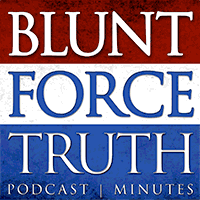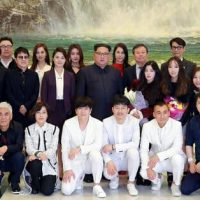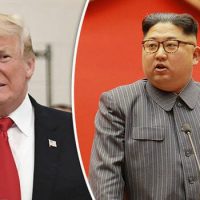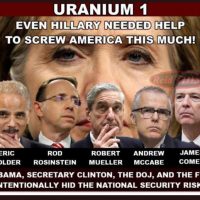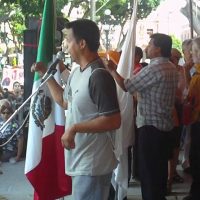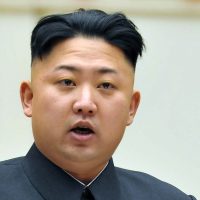History’s lessons for the approaching de-nuclearization negotiations.
North Korea’s dictator Kim Jong-un announced a unilateral suspension of nuclear weapons and long-range ballistic missile testing. He also said that his regime would close a nuclear test site. “The nuclear test site has done its job,” Kim Jong-un declared. Kim made the announcement days before he is scheduled to meet with South Korea’s President Moon Jae-in. Kim had previously indicated that he would not insist on the withdrawal of all U.S. troops from the Korean Peninsula as a precondition to negotiating denuclearization.
A spokesperson for President Moon’s office said his country views “the North’s decision as a significant step toward the denuclearization of the Korean Peninsula the world has wished for.” President Trump initially welcomed the move, tweeting, “North Korea has agreed to suspend all Nuclear Tests and close up a major test site. This is very good news for North Korea and the World – big progress! Look forward to our Summit.” On Sunday, however, President Trump struck a more cautious note. “We are a long way from conclusion on North Korea, maybe things will work out, and maybe they won’t – only time will tell … But the work I am doing now should have been done a long time ago!” President Trump tweeted. The president had previously said that he would be willing to forego his own planned summit with Kim Jong-un in late May or early June, or walk out while it is underway, if he concludes that it is a useless exercise.
While better than nothing, there is less to North Korea’s announced suspension decision than meets the eye. At best, it preserves the current shaky status quo, as no testing has occurred for several months. Assuming Kim follows through with his announcement, his decision is completely reversible. He would only be temporarily freezing in place further testing of nuclear bombs and intercontinental ballistic missiles that have largely been proven to work. The test site Kim claims to be closing can be easily re-opened. Kim is getting rid of nothing. He is dismantling nothing. He is not pledging to halt the testing of short and medium range ballistic missiles capable of hitting Japan and other countries in the region or even Guam. His announcement does not include any mention of halting research and development or production of more advanced nuclear weapons or missile technology, including an operable reentry vehicle capable of carrying a warhead through the atmosphere to its target in the United States.
What Kim Jong-un has done is take the first step on his side to advance the freeze-for-freeze moratorium proposed repeatedly by China and Russia, under which North Korea would freeze any further testing of its nuclear weapons and ballistic missiles in exchange for a freeze on any major joint military exercises by the United States and South Korea. By doing so, Kim may be laying what one senior American official called a “freeze trap,” as quoted by the New York Times. Kim appears bent on finding ways to chip away at the Trump administration’s determination to hold the line on maintaining maximum economic pressure on Kim until he puts his country on the path of complete, irreversible, and verifiable denuclearization.
During the lead up to his summit meeting with South Korea’s president, Kim is exploiting a gap between the South Korean government’s eagerness to seize upon any sign of an olive branch from North Korea and the Trump administration’s current hard line. Kim may make additional symbolic concessions during that summit meeting as well, or shortly thereafter, in advance of Kim’s summit meeting with President Trump. This could even include an announcement of the release of one or more American citizens now being detained in North Korea, promoted as a good will gesture.
Moreover, by unilaterally agreeing to move forward with a freeze along the lines proposed by China and Russia, Kim is hoping to peel them away from continued support of the harsh multilateral economic sanctions approved unanimously by the United Nations Security Council. During Kim’s meeting with China’s President Xi Jinping in China last month, it may well be that President Xi urged Kim to make such a gesture to drive a wedge between South Korea and the United States and to put President Trump on the defensive. China is already preparing for a potential trade war with the United States. The economic sanctions the U.S. was able to persuade the Security Council to impose with China’s support last year have caused a sharp drop in China’s own trade with North Korea. China is in no mood to continue backing such stringent sanctions to its own economic detriment if it can find a way out by hyping North Korea’s appearance of a good faith interest in denuclearization.
It is a pipe dream to think that Kim Jong-un has any intention of completely giving up his nuclear weapons, ballistic missiles and the means to produce them. Kim would regard such a move as akin to suicide for his regime, after having spent so much money and political capital in building up what he has described as a “powerful deterrent firmly safeguarding” his nation’s “rights to existence.” However, to secure the lifting of economic sanctions and foreign assistance he deems necessary to achieve his goal of economic development, Kim may be willing to reciprocate with roll backs of certain elements of his regime’s nuclear and missile programs. The most one can realistically hope for in terms of measures beyond a simple freeze is a commitment by Kim to disarm existing stockpiles of hydrogen bombs, assuming any even exist now, the dismantling of all research, development, testing and production facilities related to such thermonuclear weapons, and similar actions with respect to intercontinental ballistic missiles capable of reaching the United States. Even such measures would certainly not occur anytime soon.
Given the history of the North Korean regime’s deceitful negotiating tactics and broken promises, any commitments it does end up offering are worthless in the absence of foolproof verification mechanisms. Summing up the likely outcome, Lee Sung-yoon, a Korea expert at the Fletcher School of Law and Diplomacy at Tufts University, was quoted by the New York Times as saying, “History repeats itself as farce.”
The best advice for President Trump goes beyond the late President Ronald Reagan’s famous line, “Trust but verify.” The new byword must be “distrust and don’t stop verifying.”
Link: https://www.frontpagemag.com/fpm/269965/north-korean-nuclear-freeze-trap-joseph-klein
Want more BFT? Leave us a voicemail on our page or follow us on Twitter @BFT_Podcast and Facebook @BluntForceTruthPodcast. We want to hear from you! There’s no better place to get the #BluntForceTruth.
